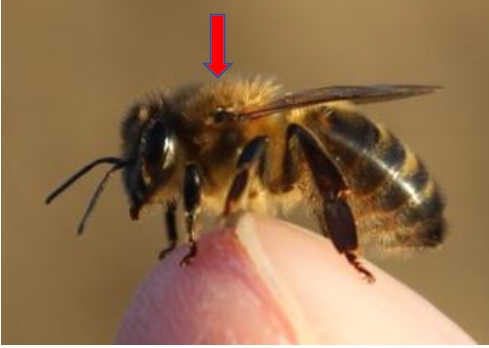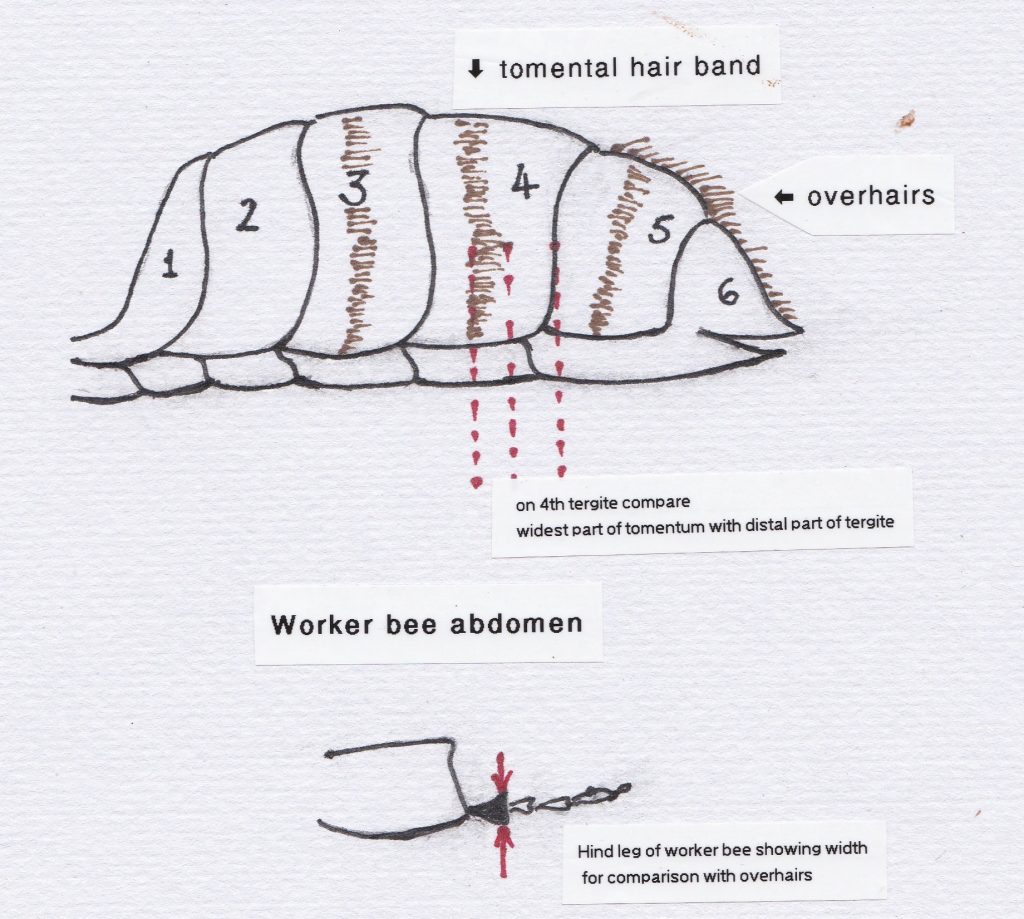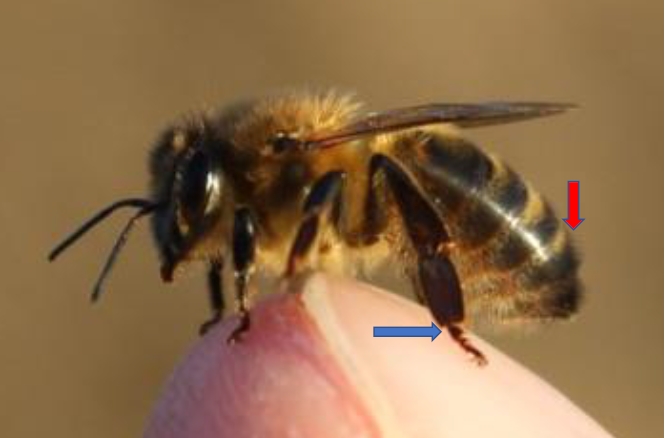[scoring hairs and tomenta traits – PDF download]
The numbers refer to the tergite plates that can be easily seen looking at the back of the bee. These will be found in the textbooks recommended but note that they do not refer to correct anatomical numbering of the tergite plates as some are fused and hidden at the thoracic end and in the sting chamber area.
Thoracic hair colour is a good indicator of bee type. The area on the upper surface of the thorax has black and brown hairs in the dark native honey bee. Carniolans, Italians and Buckfast are paler, usually with no black hairs. The ‘halo’ of pale hairs around the thorax is very noticeable in the eastern types of honey bee and less prominent in dark native honey bees.

Tomenta are the bands of short, fine hairs running across the abdominal segments and most easily seen on the visible 3rd, 4th and 5th tergites shown in the diagram below. Although they can be accurately measured this is unnecessary for our purposes. A visual assessment of the widest part of the hair band across the visible 4th tergite comparing with the rest of the tergite seen towards the tail end is all that is required. There are three questions which serve to discriminate native honey bees from other types:

1) Is the hair band equal to, less than, or more than half the width of the distal part of the tergite? The native honey bee has a narrow tomentum. If the tomental band width is 40-50% it would be classified as medium and more than 50% as broad. Some may find it easier to use a low powered hand lens to assess this. Broad tomenta are not seen in dark native honey bees.
2) Are the hairs a little sparse? Good examples of Carniolans, Buckfast and Italians show denser hairs and a bolder, paler appearance of the tomentum. Bear in mind that young bees are covered in pale hairs which disappear as they mature.
3) Comparing the 5th visible tergite to the 4th, is the tomental band markedly narrower? The eastern types of honey bee have tomental bands on the tergites that are more equal in width.
Assessing whether or not a sample of bees fits the dark native honey bee for tomentum bands involves a consideration of these three features. In practice, all of this can be assessed at a glance.
Overhair length can be assessed by comparing the width of the first foot limb of the back leg of the bee which is about 0.4mm. (Blue arrow below). In the photo a quick look shows hair length on the 5th visible tergite (red arrow) against a lighter background is at least the width of the first foot (0.4mm). The dark European honey bees can have hairs clearly as long whereas Carniolans, Italians and Buckfast will have short, neater hairs.

As with all visible features, expect a pure stock to be fairly uniform for all these traits. With the exception of young bees with extra pale hair and worn older bees, bees in a colony should all look similar.
SNHBS Score sheet to evaluate diagnostic traits in bee samples – [Download Excel sheet].
